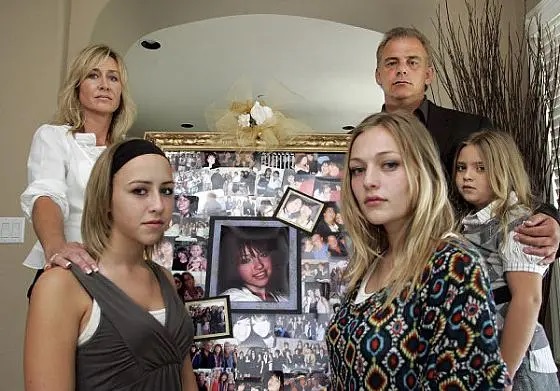The Nikki Catsouras accident is a heartbreaking and widely publicized incident that has left a lasting impact, not only on the lives of the family involved but also on society’s perceptions of privacy, morality, and the darker sides of the internet. Nikki’s story is not just about a tragic car crash but also about the violation of human dignity and the consequences of the reckless sharing of graphic content. This article delves into the accident, the aftermath, and the legal and ethical issues that arose from it.
Table of Contents
Who Was Nikki Catsouras?
Nikki Catsouras was an 18-year-old girl living in Orange County, California. She was described by her family as a bright and lively teenager with a promising future. Nikki came from an affluent family and had access to many luxuries, but her life, like many teenagers, had its challenges. In the months leading up to her accident, Nikki was reportedly going through some emotional struggles, which contributed to the tragic events of October 31, 2006.
The Day of the Accident
On Halloween 2006, Nikki got into an argument with her parents. As a result, she made the impulsive decision to take her father’s Porsche 911 Carrera without permission. Nikki had no driving experience with this powerful car, which could reach very high speeds in a matter of seconds. Concerned, her father, Christos Catsouras, began searching for her, but the situation quickly took a devastating turn.
The Events Leading to the Crash
Nikki drove at dangerously high speeds on California State Route 241. Witnesses later reported that she was traveling at over 100 miles per hour when she attempted to overtake another car. However, she clipped the vehicle, causing her to lose control of the Porsche. The car careened off the road, hitting a toll booth at full force. The collision was catastrophic. Nikki Catsouras died instantly from the impact, and her body suffered severe trauma.
The Severity of the Crash
The severity of the accident was horrifying. The force of the crash had a gruesome effect on Nikki’s body, and the car was destroyed beyond recognition. First responders arrived at the scene to find a scene of devastation, and photos were taken by members of the California Highway Patrol (CHP) as part of the standard accident investigation.
The Disturbing Aftermath
What followed after Nikki’s death was even more horrifying for her family than the crash itself. The photos taken by the CHP officers were supposed to be confidential and used only for investigative purposes. However, two CHP employees — Aaron Reich and Thomas O’Donnell — shared the graphic images of the crash outside of official channels. These photographs, which showed Nikki’s disfigured body, were eventually leaked online.
The Spread of Graphic Photos
The photos quickly spread across various websites and forums, including platforms that reveled in shocking content. These images were shared and circulated without the consent or knowledge of the Catsouras family. What made this incident even more disturbing was how some individuals used the images to taunt the family. They sent the photos anonymously to Nikki’s relatives with cruel and malicious captions.
The family was forced to disconnect from the internet and change their contact information to avoid the relentless harassment. Despite their efforts, the images continued to spread. For Christos and Lesli Catsouras, this digital nightmare compounded their grief, turning their mourning into a never-ending trauma.
Legal Battle and Ethical Concerns

The Catsouras family immediately sought justice for the unauthorized distribution of these horrific images. In 2007, they filed a lawsuit against the California Highway Patrol for negligence and invasion of privacy. The lawsuit alleged that the CHP had failed in its duty to protect sensitive material and had inflicted emotional distress upon the family by allowing the photos to be leaked.
In 2012, after years of litigation, the family was awarded a $2.37 million settlement from the California Court of Appeals. The court ruled that the actions of the CHP officers had indeed caused irreparable harm to the Catsouras family. This legal victory was an important step toward justice, but it could never undo the immense pain the family endured.
Ethical Debate on Online Content Sharing
The Nikki Catsouras case also opened up a broader discussion about ethics on the internet and how society handles graphic content. The relentless sharing of the accident photos raised serious questions about privacy rights in the digital age. Many people who circulated the images did so for shock value, without any consideration of the emotional devastation caused to the family.
Should such content be controlled or censored? The Catsouras case highlighted the need for stronger regulations and accountability for the sharing of disturbing images online. It also underscored the responsibility of law enforcement agencies to protect sensitive material, and the consequences when they fail to do so.
The Emotional Toll on the Catsouras Family

The emotional toll on the Catsouras family cannot be overstated. Losing a child is devastating in any circumstance, but the added trauma of having Nikki’s mutilated body publicly displayed across the internet made their grieving process unbearable. The family described their experience as living in a constant state of mourning, unable to find peace.
Nikki’s mother, Lesli Catsouras, spoke about how she could no longer use the internet for fear of stumbling upon the images. The family had to be on guard at all times, avoiding social media and public platforms where they might be confronted with reminders of the accident. The harassment they received — including cruel emails, prank messages, and comments from anonymous internet users — compounded their suffering.
The Legacy of the Nikki Catsouras Accident

Today, the Nikki Catsouras accident serves as a tragic reminder of both the fragility of life and the dangerous potential of the internet to spread harm. Nikki’s story is not only about the accident itself but also about how digital privacy violations can add unimaginable pain to already unbearable loss.
Changes in Law and Policy
In response to the Catsouras case, some legal experts and advocates began pushing for new laws and protections to prevent similar incidents. The concept of the “right to be forgotten” gained traction, calling for the removal of harmful or sensitive content from online platforms at the request of victims or their families. This concept has been debated in various countries, particularly in Europe, where stronger privacy laws exist.
While it’s difficult to completely erase content once it goes viral, the Catsouras family’s fight has helped raise awareness of the need for more robust digital protections and ethical standards in handling sensitive material.
Reflections on Privacy in the Digital Age
The Nikki Catsouras accident sheds light on the broader issue of privacy in the digital age. With the rapid dissemination of information across social media platforms and websites, it’s easier than ever for private moments, even tragic ones, to become public. In this case, the failure of the CHP to secure sensitive materials turned into a global public spectacle.
This case raises important questions about the responsibility of both law enforcement and citizens when it comes to handling sensitive content. It’s easy to forget that behind every viral photo or video is a human being and, often, a family that may be deeply affected by its public sharing.
Conclusion
The Nikki Catsouras accident is a tragic event that highlights the dangers of both reckless driving and irresponsible online behavior. While the accident itself resulted in the devastating loss of an 18-year-old girl, the cruel aftermath of the photo leak turned the Catsouras family’s grief into a prolonged nightmare. Through their legal fight, the family not only sought justice for their daughter but also raised awareness about the ethical challenges we face in the digital age.
The legacy of this incident calls for greater reflection on how we treat one another, both in life and online. Nikki’s story is a cautionary tale, reminding us of the consequences of our actions and the importance of safeguarding the dignity of those who have passed.
Also read Varsha Bollamma Age



